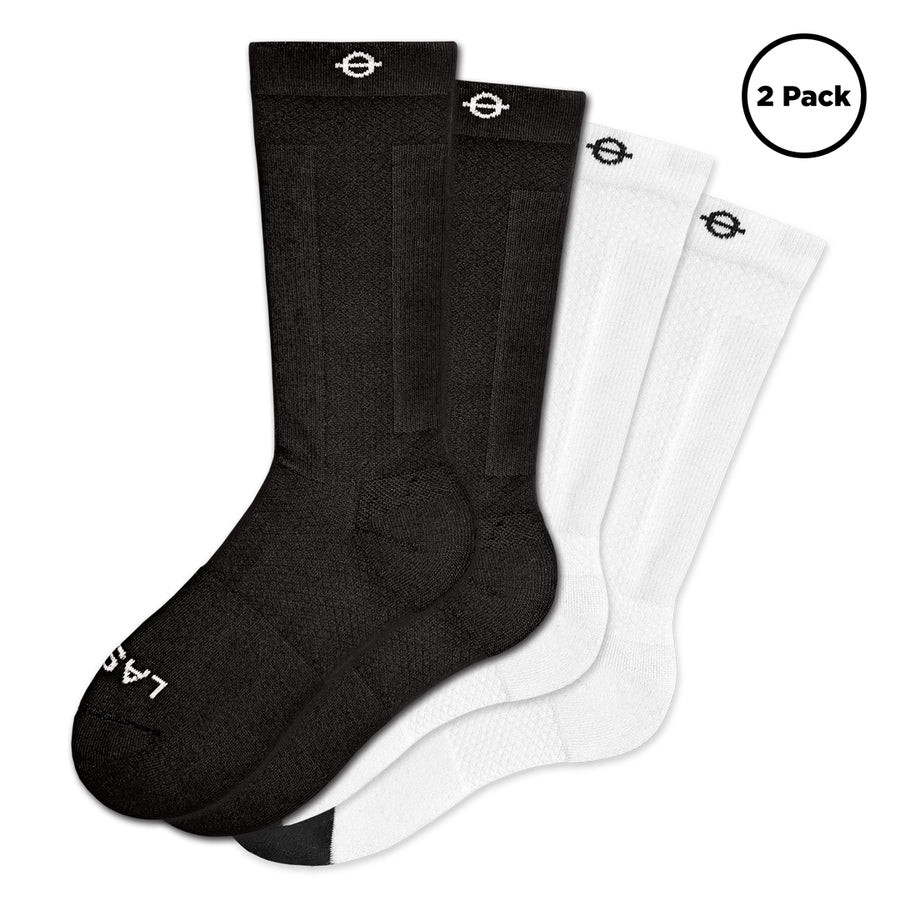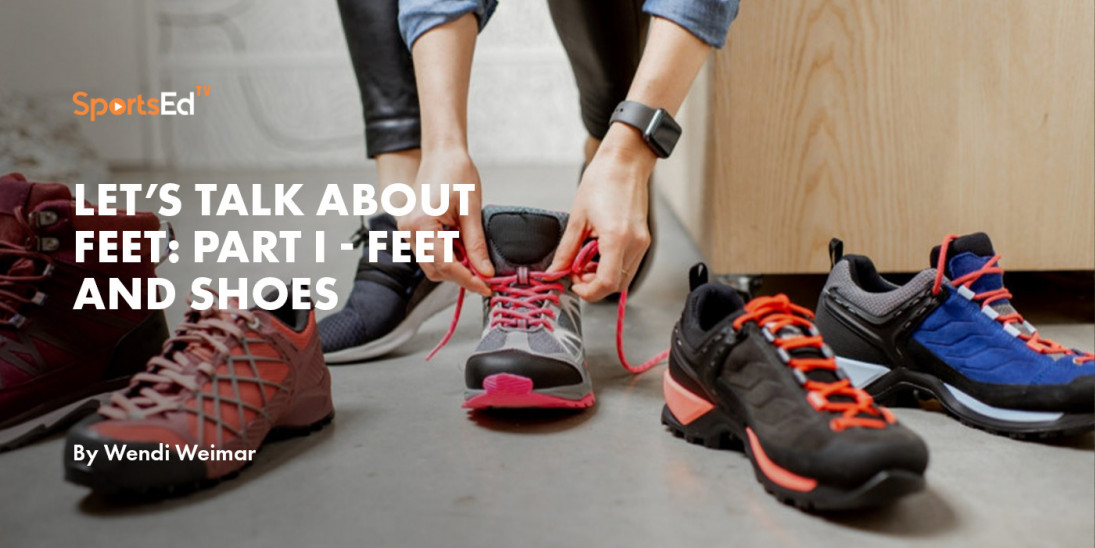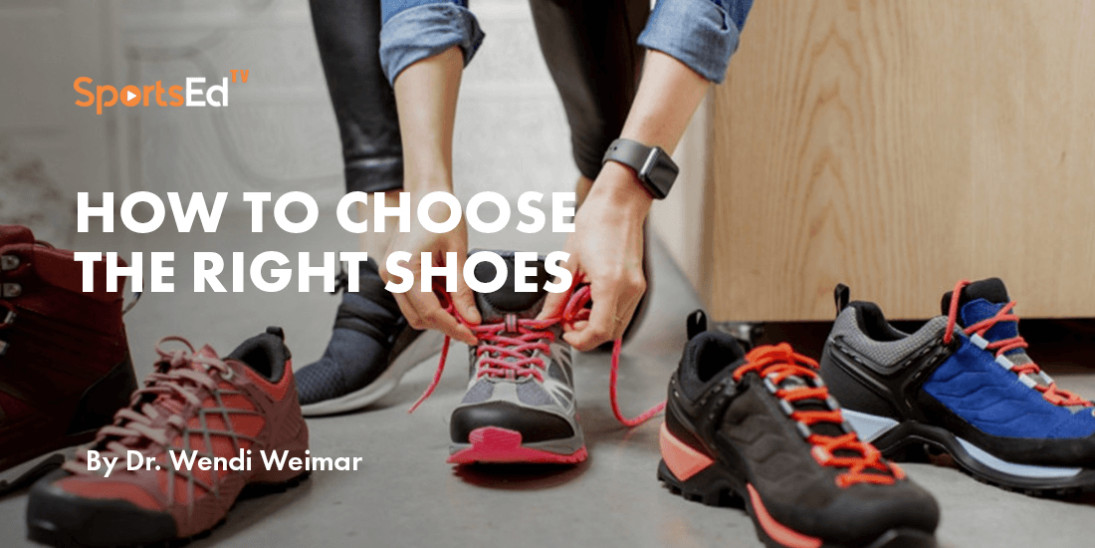Health, Running
Welcome and thanks for visiting...

Let's Talk About Feet: Part 2 - Feet and Socks

In our previous post, we encouraged you to find the correct shoe for your feet and to tie your shoes in a way that would allow you to take advantage of the structural components of the shoe that work best for your feet. The next thing to consider is the footwear apparel between the shoe and the foot, the sock. Socks are often an overlooked piece of apparel as the points of consideration for socks have often been limited to price, color, and will it reduce blisters, as people pick up a bag of socks for shoes sizes 7-12. However, size, materials, and components are factors that should become part of your sock decision-making processes. Let’s start by considering the compositional differences between a traditional sock and a specialized sock. Figure 1 presents how specialized socks have various components that perform different functions, such as a relatively new component known as the elasticized arch support1. While Figure 2 demonstrates the lack of foot accommodating components of a traditional “tube” sock. Socks that are not designed for your foot size, such as the traditional sock, will cause the sock to either ride too high up your heel or irritate your heel. Socks comprised of various materials, such as cotton, spandex, and nylon, and in varying percentages, address many concerns of the wearer. Some of these concerns can be identified as the capability of the sock to wick moisture away from the foot, provide graduated compression, provide enhanced cushioning with targeted padding, and provide reinforced support to the toes, heels, and arch support. Additional information about the functionality of these materials has been identified in the table below. The unique variations of components added to socks enable personalized comfort and improvement to the sock's performance. Socks started as a commodity of fashion but have evolved into an essential tool for the care of the human foot.
Figure 1: Components of an athletic sock.

Use code Sportsedtv for a 15% discount on Lasso Performance Socks
Figure 2: Image of a “tube sock. Note: no structural components that fit the foot.

|
Sock Composition |
Function |
|
Cotton |
A lightweight temperature regulating material |
|
Wool |
Assists with regulating temperature (improve warmth in colder seasons and cooling in warmer seasons) |
|
Acrylic |
A lightweight and resilient material that assists with moisture-wicking and provides a secure fit. |
|
Polyester |
Assists with cushioning and moisture-wicking. |
|
Polypropylene |
A lightweight temperature regulating |
Our lab recently completed a project investigating socks (manuscript soon to be in review). This project found that socks that had an elastic arch and were composed of various materials (60% polyester, 25% polypropylene, 10% spandex, and 5% rubber) decreased medial/lateral motion of the center of pressure without changing other spatiotemporal gait characteristics, such as stride length and stride frequency. Center of pressure is a point identified as the centroid (or center point) that all pressure can be considered concentrated. This finding suggests that socks with elastic arches diminished motion of the foot in the frontal plane or about the long axis of the foot. In Figure 3, the white line represents the center of pressure path acting on the foot as a person walks in a "tube sock" in the top image and an athletic sock with a reinforced elasticized arch (bottom image). The foot did not wobble left and right in the sock with the reinforced arch while it was in contact with the ground, as much as it did while barefoot or while wearing a traditional cotton sock without features (i.e., a tube sock). This decrease in motion could aid in decreasing fatigue as less motion may place a smaller demand on the lower extremity muscles. However, further research is needed to determine if the lack of mobility may prevent the foot from finding the foot's most effective/efficient motion.
Figure 3: Center of pressure path of the same person while wearing two different socks.
Cotton Sock

Athletic Sock

References
1: Figure 1: Basra, S.A., Asfand, N., Azam, Z., Iftikhar, K., Irshad, M.A. (2021). Analysis of the factors affecting the dimensional stability of socks using full-factorial experimental design method. Journal of Engineered Fabrics & Fibers. 15(1); 1-10.
2: Figure 2: https://www.walmart.com/ip/Mens-Wholesale-Cotton-Tube-Socks-White-Tube-Socks-For-Men-10-13-12-Pairs/883953611.






